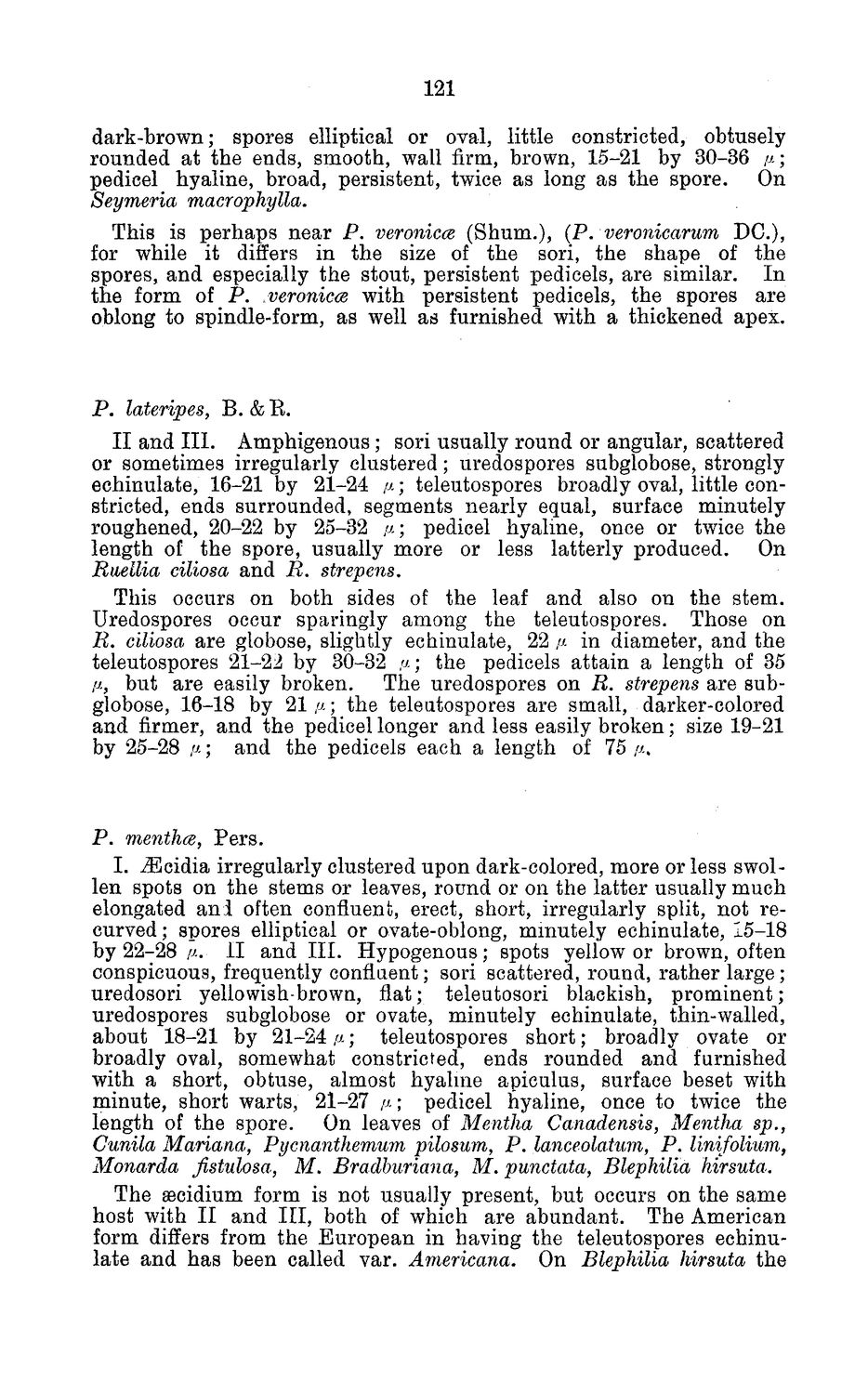| |
| |
Caption: Board of Trustees Minutes - 1884
This is a reduced-resolution page image for fast online browsing.

EXTRACTED TEXT FROM PAGE:
121 dark-brown; spores elliptical or oval, little constricted, obtusely rounded at the ends, smooth, wall firm, brown, 15-21 by 30-36 n; pedicel hyaline, broad, persistent, twice as long as the spore. On Seymeria macrophylla. This is perhaps near P. veronica (Shum.), (P. veronicarum DC), for while it differs in the size of the sori, the shape of the spores, and especially the stout, persistent pedicels, are similar. In the form of P. veronica with persistent pedicels, the spores are oblong to spindle-form, as well as furnished with a thickened apex. P. lateripes, B. & E. II and III. Amphigenous; sori usually round or angular, scattered or sometimes irregularly clustered; uredospores subglobose, strongly echinulate, 16-21 by 2i-24 //.; teleutospores broadly oval, little constricted, ends surrounded, segments nearly equal, surface minutely roughened, 20-22 by 25-32 JJL; pedicel hyaline, once or twice the length of the spore, usually more or less latterly produced. On Ruellia ciliosa and R. strepens. This occurs on both sides of the leaf and also on the stem. Uredospores occur sparingly among the teleutospores. Those on R. ciliosa are globose, slightly echinulate, 22 //. in diameter, and the teleutospores 21-22 by 30-32 ,«; the pedicels attain a length of 35 fi9 but are easily broken. The uredospores on R. strepens are subglobose, 16-18 by 21 fj.; the teleutospores are small, darker-colored and firmer, and the pedicel longer and less easily broken; size 19-21 by 25-28 fi; and the pedicels each a length of 75 ,u. P. menthcz, Pers. I. iEcidia irregularly clustered upon dark-colored, more or less swollen spots on the stems or leaves, round or on the latter usually much elongated and often confluent, erect, short, irregularly split, not recurved; spores elliptical or ovate-oblong, minutely echinulate, 15-18 by 22-28 /A II and III. Hypogenous; spots yellow or brown, often conspicuous, frequently confluent; sori scattered, round, rather large; uredosori yellowish-brown, flat; teleutosori blackish, prominent; uredospores subglobose or ovate, minutely echinulate, thin-walled, about 18-21 by 21-24/*; teleutospores short; broadly ovate or broadly oval, somewhat constricted, ends rounded and furnished with a short, obtuse, almost hyaline apiculus, surface beset with minute, short warts, 21-27 fi; pedicel hyaline, once to twice the length of the spore. On leaves of Mentha Canadensis, Mentha sp., Cunila Mariana, Pycnanthemum pilosum, P. lanceolatum, P. linifolium, Monarda fistulosa, M. Bradburiana, M. punctata, Blephilia hirsuta. The secidium form is not usually present, but occurs on the same host with II and III, both of which are abundant. The American form differs from the European in having the teleutospores echinulate and has been called var. Americana. On Blephilia hirsuta the
| |